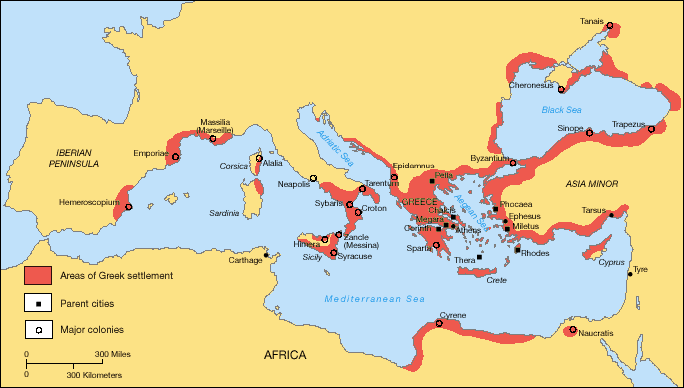|
Philolaus
Philolaus (; , ''Philólaos''; ) was a Greek Pythagorean and pre-Socratic philosopher. He was born in a Greek colony in Italy and migrated to Greece. Philolaus has been called one of three most prominent figures in the Pythagorean tradition and the most outstanding figure in the Pythagorean school. Pythagoras developed a school of philosophy that was dominated by both mathematics and mysticism. Most of what is known today about the Pythagorean astronomical system is derived from Philolaus's views. He may have been the first to write about Pythagorean doctrine. According to , who cites Nicomachus, Philolaus was the successor of Pythagoras. He argued that at the foundation of everything is the part played by the limiting and limitless, which combine in a harmony. With his assertions that the Earth was not the center of the universe (geocentrism), he is credited with the earliest known discussion of concepts in the development of heliocentrism, the theory that the Earth is not th ... [...More Info...] [...Related Items...] OR: [Wikipedia] [Google] [Baidu] |
Central Fire
An astronomical system positing that the Earth, Moon, Sun, and planets revolve around an unseen "Central Fire" was developed in the fifth century BC and has been attributed to the Pythagorean philosopher Philolaus. The system has been called "the first coherent system in which celestial bodies move in circles", anticipating Copernicus in moving "the earth from the center of the cosmos ndmaking it a planet". Although its concepts of a Central Fire distinct from the Sun, and a nonexistent "Counter-Earth" were erroneous, the system contained the insight that "the apparent motion of the heavenly bodies" was (in large part) due to "the real motion of the observer". How much of the system was intended to explain observed phenomena and how much was based on myth, mysticism, and religion is disputed. While the departure from traditional reasoning is impressive, other than the inclusion of the five visible planets, very little of the Pythagorean system is based on genuine observation. In re ... [...More Info...] [...Related Items...] OR: [Wikipedia] [Google] [Baidu] |
Pythagoreanism
Pythagoreanism originated in the 6th century BC, based on and around the teachings and beliefs held by Pythagoras and his followers, the Pythagoreans. Pythagoras established the first Pythagorean community in the Ancient Greece, ancient Greek colony of Crotone, Kroton, in modern Calabria (Italy) circa 530 BC. Early Pythagorean communities spread throughout Magna Graecia. Already during Pythagoras' life it is likely that the distinction between the ''akousmatikoi'' ("those who listen"), who is conventionally regarded as more concerned with religious, and ritual elements, and associated with the oral tradition, and the ''mathematikoi'' ("those who learn") existed. The ancient biographers of Pythagoras, Iamblichus () and his master Porphyry (philosopher), Porphyry ( ) seem to make the distinction of the two as that of 'beginner' and 'advanced'. As the Pythagorean cenobites practiced an esoteric path, like the Greco-Roman mysteries, mystery schools of antiquity, the adherents, ''akou ... [...More Info...] [...Related Items...] OR: [Wikipedia] [Google] [Baidu] |
Counter-Earth
The Counter-Earth is a : Hypothetical bodies of the Solar System, hypothetical body of the Solar System that orbits on the other side of the Solar System from Earth. A Counter-Earth or ''Antichthon'' () was hypothesized by the pre-Socratic philosophy, pre-Socratic Ancient Greece, Greek philosopher Philolaus () to support his non-geocentric model, geocentric cosmology, in which all objects in the universe revolve around a "Central Fire" (unseen from Earth and distinct from the Sun which also revolves around it). In modern times a hypothetical planet always on the other side of the Sun from Earth has been called a "Counter-Earth", and has been a recurring theme in Unidentified flying object, UFO claims, as well as in fiction (particularly Fictional planets of the Solar System#Counter-Earth, science fiction). Greek Pythagorean universe An Cosmology#Historical cosmologies, astronomical system positing that the Earth, Moon, Sun, planets and unseen "counter-earth" revolve around an uns ... [...More Info...] [...Related Items...] OR: [Wikipedia] [Google] [Baidu] |
Heliocentrism
Heliocentrism (also known as the heliocentric model) is a superseded astronomical model in which the Earth and planets orbit around the Sun at the center of the universe. Historically, heliocentrism was opposed to geocentrism, which placed the Earth at the center. The notion that the Earth revolves around the Sun had been proposed as early as the 3rd century BC by Aristarchus of Samos, who had been influenced by a concept presented by Philolaus of Croton (c. 470 – 385 BC). In the 5th century BC the Greek philosophers Philolaus and Hicetas had the thought on different occasions that the Earth was spherical and revolving around a "mystical" central fire, and that this fire regulated the universe. In medieval Europe, however, Aristarchus' heliocentrism attracted little attention—possibly because of the loss of scientific works of the Hellenistic period. It was not until the 16th century that a mathematical model of a heliocentric system was presented by the Renaissanc ... [...More Info...] [...Related Items...] OR: [Wikipedia] [Google] [Baidu] |
Pre-Socratic Philosophy
Pre-Socratic philosophy, also known as early Greek philosophy, is ancient Greek philosophy before Socrates. Pre-Socratic philosophers were mostly interested in cosmology, the beginning and the substance of the universe, but the inquiries of these early philosophers spanned the workings of the natural world as well as human society, ethics, and religion. They sought explanations based on natural law rather than the actions of gods. Their work and writing has been almost entirely lost. Knowledge of their views comes from ''testimonia'', i.e. later authors' discussions of the work of pre-Socratics. Philosophy found fertile ground in the ancient Greek world because of the close ties with neighboring civilizations and the rise of autonomous civil entities, '' poleis''. Pre-Socratic philosophy began in the 6th century BC with the three Milesians: Thales, Anaximander, and Anaximenes. They all attributed the '' arche'' (a word that could take the meaning of "origin", "substance" or ... [...More Info...] [...Related Items...] OR: [Wikipedia] [Google] [Baidu] |
Eurytus (Pythagorean)
Eurytus (; ; fl. 400 BC) was an eminent Pythagorean philosopher from Magna Graecia who Iamblichus in one passage describes as a native of Croton, while in another, he enumerates him among the Tarentine Pythagoreans. Biography Eurytus was a disciple of Philolaus, and Diogenes Laërtius mentions him among the teachers of Plato, though this statement is very doubtful. It is uncertain whether Eurytus was the author of any work, unless we suppose that the fragment in Stobaeus, which is there ascribed to one Eurytus, belongs to this Eurytus. Through a dubious commentary to Aristotle's ''Metaphysics'' a caricatural image of Eurytus has gained wide currency. A mediaeval writer confused with Alexander of Aphrodisias presented Eurytos as a kind of mosaic-setter who delineated various shapes with some definite number of pebbles.Reviel Netz,''The problem of Pythagorean mathematics'' in ''A History of Pythagoreanism'', ed C. Huffman, Cambridge UP, 2014: " Pseudo-Alexander, writing not earlier ... [...More Info...] [...Related Items...] OR: [Wikipedia] [Google] [Baidu] |
Phaedo
''Phaedo'' (; , ''Phaidōn'') is a dialogue written by Plato, in which Socrates discusses the immortality of the soul and the nature of the afterlife with his friends in the hours leading up to his death. Socrates explores various arguments for the soul's immortality with the Pythagorean philosophers Simmias and Cebes of Thebes in order to show that there is an afterlife in which the soul will dwell following death. The dialogue concludes with a mythological narrative of the descent into Tarturus and an account of Socrates' final moments before his execution. Background The dialogue is set in 399 BCE, in an Athenian prison, during the last hours prior to the death of Socrates. It is presented within a frame story by Phaedo of Elis, who is recounting the events to Echecrates, a Pythagorean philosopher. Characters Speakers in the frame story: * Phaedo of Elis: a follower of Socrates, a youth allegedly enslaved as a prisoner of war, whose freedom was purchased at Soc ... [...More Info...] [...Related Items...] OR: [Wikipedia] [Google] [Baidu] |
Apeiron
''Apeiron'' (; ) is a Greek word meaning '(that which is) unlimited; boundless; infinite; indefinite' from ''a-'' 'without' and ''peirar'' 'end, limit; boundary', the Ionic Greek form of ''peras'' 'end, limit, boundary'. Origin of everything The ''apeiron'' is central to the cosmological theory created by Anaximander, a 6th-century BC pre-Socratic Greek philosopher whose work is mostly lost. From the few existing fragments, we learn that he believed the beginning or ultimate reality ('' arche'') is eternal and infinite, or boundless (''apeiron''), subject to neither old age nor decay, which perpetually yields fresh materials from which everything we can perceive is derived. ''Apeiron'' generated the opposites (hot–cold, wet–dry, etc.) which acted on the creation of the world (cf. Heraclitus). Everything is generated from ''apeiron'' and then it is destroyed by going back to ''apeiron'', according to necessity. He believed that infinite worlds are generated from ''apeiron ... [...More Info...] [...Related Items...] OR: [Wikipedia] [Google] [Baidu] |
Pythagoras
Pythagoras of Samos (; BC) was an ancient Ionian Greek philosopher, polymath, and the eponymous founder of Pythagoreanism. His political and religious teachings were well known in Magna Graecia and influenced the philosophies of Plato, Aristotle, and, through them, Western philosophy. Modern scholars disagree regarding Pythagoras's education and influences, but most agree that he travelled to Croton in southern Italy around 530 BC, where he founded a school in which initiates were allegedly sworn to secrecy and lived a communal, ascetic lifestyle. In antiquity, Pythagoras was credited with mathematical and scientific discoveries, such as the Pythagorean theorem, Pythagorean tuning, the five regular solids, the theory of proportions, the sphericity of the Earth, the identity of the morning and evening stars as the planet Venus, and the division of the globe into five climatic zones. He was reputedly the first man to call himself a philosopher ("lover of wi ... [...More Info...] [...Related Items...] OR: [Wikipedia] [Google] [Baidu] |
Crotone
Crotone (; ; or ) is a city and ''comune'' in Calabria, Italy. Founded as the Achaean colony of Kroton ( or ; ), it became a great Greek city, home of the renowned mathematician-philosopher Pythagoras amongst other famous citizens, and one of the most important centres of Magna Graecia. It was known as Cotrone from the Middle Ages until 1928, when its name was changed to the current one. In 1992, it became the capital of the newly established Province of Crotone. History The promontory of Kroton was inhabited by indigenous populations, perhaps Oenotrians and Japigi, in the Bronze Age and early Iron Age. Foundation Kroton's '' oikistes'' (founder) was Myscellus, from the city of Rhypes in Achaea in the northern Peloponnese, after consulting the Delphic Oracle who announced: :''Cross the vast sea and next to the Esaro (river) you will found Kroton.'' The Achaeans were motivated, like others of the Greek colonisation, by the lack of cultivatable land in their mounta ... [...More Info...] [...Related Items...] OR: [Wikipedia] [Google] [Baidu] |
Universe
The universe is all of space and time and their contents. It comprises all of existence, any fundamental interaction, physical process and physical constant, and therefore all forms of matter and energy, and the structures they form, from sub-atomic particles to entire Galaxy filament, galactic filaments. Since the early 20th century, the field of cosmology establishes that space and time emerged together at the Big Bang ago and that the Expansion of the universe, universe has been expanding since then. The observable universe, portion of the universe that can be seen by humans is approximately 93 billion light-years in diameter at present, but the total size of the universe is not known. Some of the earliest Timeline of cosmological theories, cosmological models of the universe were developed by ancient Greek philosophy, ancient Greek and Indian philosophy, Indian philosophers and were geocentric model, geocentric, placing Earth at the center. Over the centuries, more prec ... [...More Info...] [...Related Items...] OR: [Wikipedia] [Google] [Baidu] |






